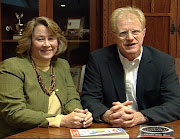When we study history, it is imperative to understand the context of the time, and the customs of the people we are reading about.
Current events have taught the peoples of the West just how strict many customs are in The Middle East. Ancient Sumerian marriages had specific and strictly adhered to customs.
The rite of Hieros Gamos (Etymology, Greek: "hieros" = holy and "gamos" = marriage) included a ritual in which the bride prepared her bridegrooms feast and then anointed his feet with spikenard while he sat at the table in front of their guests. After the ceremony the couple would join, just as we do during the honeymoon. (Often this joining implied the union of diety and human, usually associated with a Goddess or Priestess, who wed a ruler and thus santificed his sovergnty, but in this case, the reverse is implied, unless one assumes that Jesus was first in line as the Davidic King, and Mary was a High Priestess of the Essene order, but I digress, as thats another post entirely.)
My point is that this marital annointing ritual was as prevalent among the people of Jesus, as our own custom of having the bride and groom exchange rings.
Now that you know the context, what does this passage from The Bible about the feast of Bethany imply?
"Then Mary took a pound of ointment of spikenard, very costly, and anoited the feet of Jesus, and wiped his feet with her hair."
Subscribe to:
Post Comments (Atom)





























2 comments:
If only those old "buggers" had included a gospel according to Mary it may have given a whole new slant to Christianity. Anything that excludes half the world's population has serious problems.
AwoMEN brother!
Post a Comment